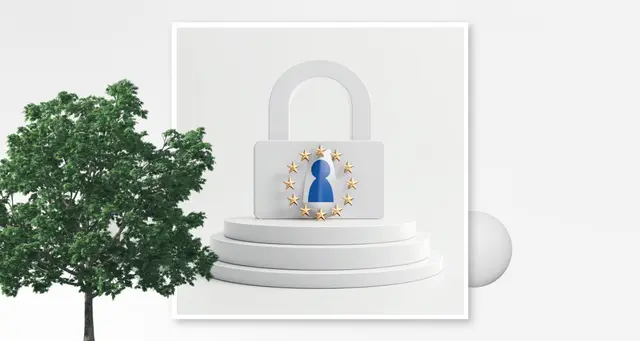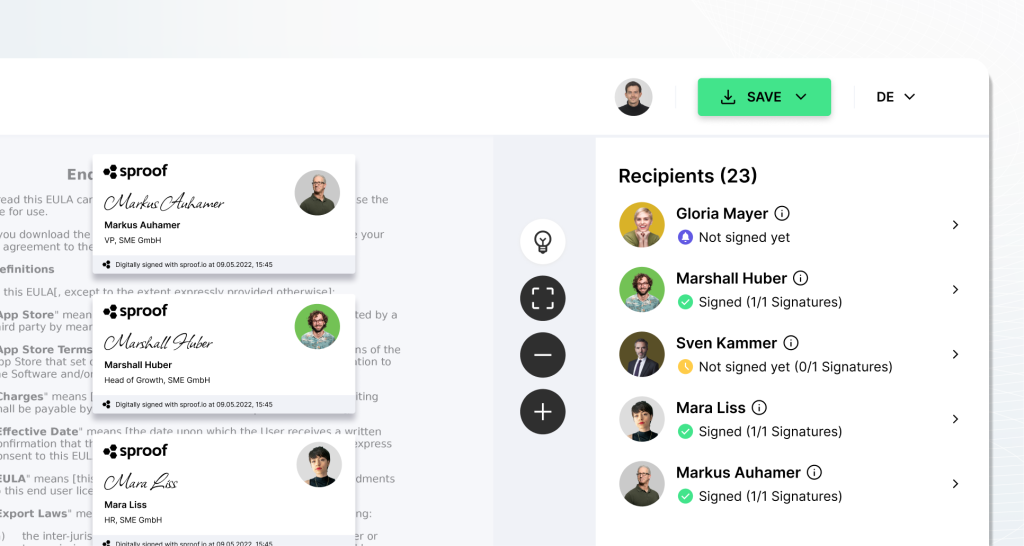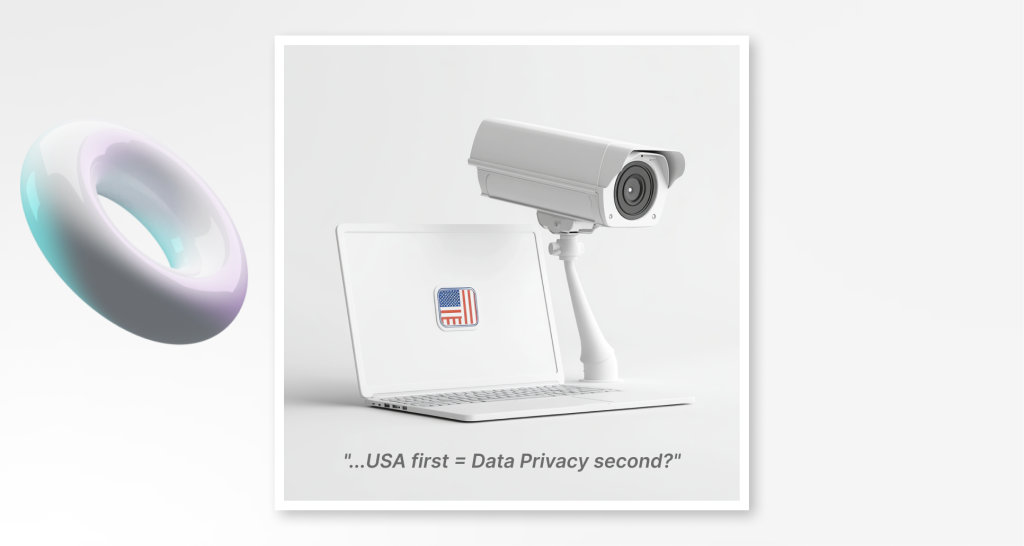The General Data Protection Regulation (GDPR) has fundamentally changed the way companies in the European Union and beyond handle personal data. This article provides a detailed overview of the GDPR, explains what it means for businesses, and provides a hands-on checklist with 7 steps to ensure GDPR compliance.
What is the GDPR?
The General Data Protection Regulation (GDPR) is a central part of EU law and forms the basis for the protection of personal data within the European Union and the European Economic Area. Their main goal is to give individuals more power over their own data through comprehensive control. At the same time, the rules for internationally active companies are to be unified and simplified in order to enable seamless and secure data exchange across borders.
Who is affected by the GDPR?
Any company that processes personal data of EU citizens, whether it is based in the EU or not, must comply with the GDPR. Those affected include:
- Companies outside the EU that collect personal information while offering goods or services to EU citizens.
- Organisations that analyse the behaviour of individuals within the EU.
What does the GDPR do?
The GDPR sets out precise guidelines for handling personal data and imposes strict compliance requirements on companies and organizations. The following essential provisions form the core of the Regulation:
- Clear consent requirement: Before personal data may be processed, clear and informed consent must be obtained from the data subjects. This consent must be given for a specific purpose and can be revoked at any time.
- Right: Individuals have the right to request information as to whether and which personal data concerning them is being processed and, if necessary, to request access to this data and further information about its processing.
- Right to rectification: If personal data is incomplete or inaccurate, data subjects have the right to request their rectification or completion without undue delay.
- Right to erasure: Also known as the “right to be forgotten”. This right allows individuals to request the erasure of their personal data, in particular where the data is no longer needed for the original purpose or consent to the processing has been withdrawn.
- Specific rules for data transfers outside the EU: In order to ensure the protection of personal data even when transferred to third countries, the GDPR imposes special requirements. Accordingly, a data transfer is only permissible if the recipient country offers a comparable level of protection or if there are appropriate safeguards such as standard data protection clauses or binding internal data protection regulations.
Data protection violation
Failure to comply with the GDPR has serious financial and reputational consequences. The regulation provides that companies that violate its provisions can be subject to heavy fines. These penalties can reach up to 4% of the global annual turnover of the company concerned, or alternatively up to 20 million euros, whichever is higher.
7 steps to GDPR compliance
The 7 steps to GDPR compliance provide clear guidance for businesses to ensure they comply with the strict requirements of the GDPR. Each step is crucial for the security and lawfulness of data processing:
Step 1: Understand the GDPR and its requirements
Before implementing digital solutions, it is crucial to develop a deep understanding of the GDPR. This also includes knowing the rights of the data subjects and the obligations of the data processors.
Step 2: Appoint a data protection officer
It is important to check whether your company needs to appoint a data protection officer. Especially companies that regularly process large amounts of personal data should fill this position.
Step 3: Conduct a data protection audit
A comprehensive audit of your data processing activities helps identify potential risks to data security.
Step 4: Risk assessment and adaptation of processes
Assess the risks associated with your current processes and align them with the GDPR. This may include implementing additional security measures or changing the way consents are obtained.
Step 5: Update your privacy policy
Your privacy policies should comply with the requirements of the GDPR and be easily accessible to all stakeholders. Regular updating is required to comply with current standards.
Step 6: Train employees
Train your employees on the principles of the GDPR. Regular training is crucial to raise awareness of data protection and avoid breaches.
Step 7: Continuous monitoring and evaluation
GDPR compliance is an ongoing process. Implement mechanisms to continuously monitor and evaluate your data processing activities to ensure that they are always in line with current data protection standards. Adapt your processes to new legal requirements or technological developments as needed.
Inference
Compliance with the GDPR is essential for all companies operating in the EU or providing services to EU citizens. By implementing the above steps, businesses can not only avoid fines, but also increase the trust of their customers. Adapting to the GDPR may be challenging at first, but it also provides an opportunity to review and improve data processing practices. A proactive approach to data protection compliance can give a company a competitive advantage and strengthen its reputation with customers and partners. Remember that data protection is not only a legal obligation, but also a central element of modern business that demonstrates respect and responsibility for your customers’ personal information.
FAQ’s about the GDPR
Do all companies have to appoint a data protection officer?
Not every company is obliged to appoint a data protection officer. This is particularly necessary for public authorities and companies that process special categories of personal data on a large scale or whose core activities consist of regular and systematic monitoring of individuals.
As a data subject, how can I exercise my rights under the GDPR?
Data subjects can assert their rights, such as the right to access, rectification, erasure or restriction of processing, directly against the responsible company. Companies are obliged to respond to such requests within one month.
What is the right to data portability?
The right to data portability allows individuals to receive their personal data that they have provided to a controller in a structured, commonly used and machine-readable format and to transmit this data to another controller without hindrance.
What role do signature providers play in terms of GDPR compliance of digital signatures?
Signature providers play an important role in ensuring the GDPR compliance of digital signatures, as they must ensure that their platforms and services comply with data protection regulations. These include, but are not limited to, the security of the data transmitted, compliance with consent requirements, and the provision of mechanisms to ensure the integrity of digital signatures.
How can I ensure that the signature provider I choose complies with GDPR data protection regulations?
To ensure that the signature provider you choose complies with GDPR data protection regulations, you can first check whether the provider has appropriate certifications or evidence of GDPR compliance. In addition, it is advisable to carefully review the provider’s privacy policy and ensure that it complies with the requirements of the GDPR. You can also ask the provider about its security measures, privacy policies, and how it handles personal data to ensure that it meets the standards of the GDPR.
Where can I see the full text of the GDPR and get more information?
The full text of the General Data Protection Regulation (GDPR) and more information can be found on the official website of the European Union . This comprehensive resource provides detailed insights into all aspects of the GDPR and serves as a reference for companies, organizations, and data subjects dealing with data protection.
What factors influence the amount of fines under the GDPR?
The amount of fines under the GDPR is influenced by various factors, including the nature of the violation, the degree of culpability, previous violations, and the financial capacity of the company.
Are there differences in fines for small and medium-sized enterprises compared to large corporations?
Yes, the GDPR provides for different fines for small and medium-sized companies compared to large corporations. While the amount of fines can be significant in both cases, the regulation also takes into account the financial capacity of the company concerned when determining the penalty.




